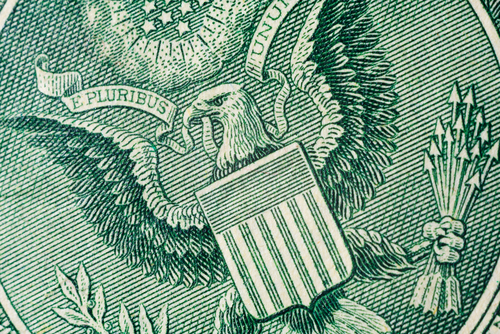On this day in history, June 20th, 1782, The U.S. Congress officially adopted the Great Seal of the United States of America after 6 years of discussion. The front of the seal depicts a bald eagle clutching an olive branch in its right talon and arrows in its left. On its breast appears a shield marked with 13 vertical red and white stripes topped by a bar of blue. The eagle’s beak clutches a banner inscribed, E pluribus unum, a Latin phrase meaning “Out of Many One.” Above the eagle’s head, golden rays burst forth, encircling 13 stars.
Charles Thomas outlined the symbolic connotations of the seal’s elements when he presented his design to Congress. The bottom of the shield (or pale) represents the 13 states united in support of the blue bar at the top of the shield (or chief), “which unites the whole and represents Congress.” The motto E Pluribus Unum serves as a textual representation of the same relationship. The colors used in the shield are the same as those in the flag: alternating red and white for the important balance between innocence and valor, topped by the blue of “vigilance, perseverance and justice.” The eagle’s talons hold symbols of Congress power to make peace (the olive branch) and war (arrows). The constellation of stars indicates that “a new State [is] taking its place and rank among other sovereign powers.”


